What do you do with all those cattail leaves you’ve gathered and harvested to bring home? Follow Cathryn’s steps here to prepare and process cattail leaves for weaving chair seats and baskets.
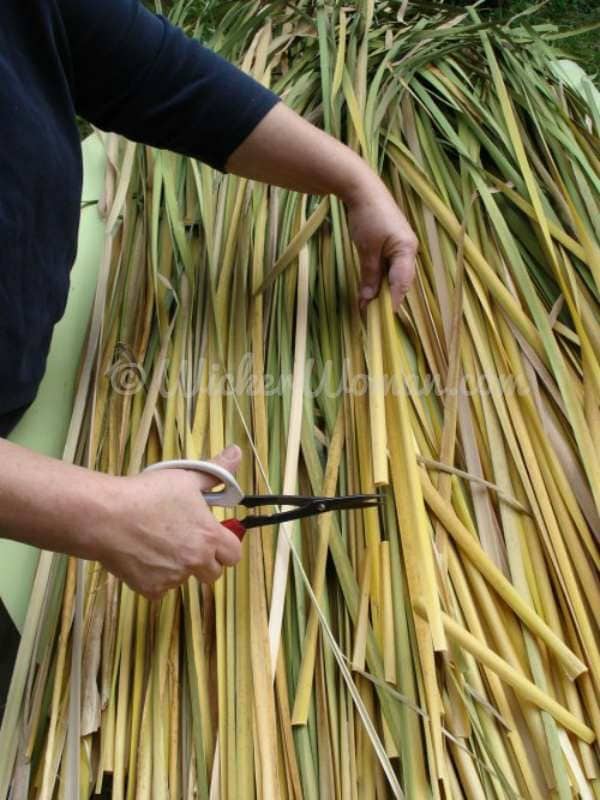
Cattail leaves can be used as weavers immediately after harvesting, but since there is a great deal of shrinkage as they dry, it’s better to dry them out first.
Then you can reconstitute or “mellow” them for weaving at a later date to reduce the shrinkage, enabling a taught chair seat or basket with no excess gaps when the weaving project is complete.
How to Dry the Cattail Leaves
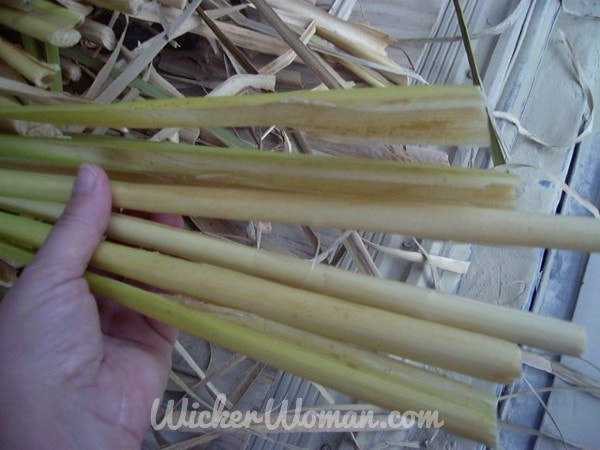
When you get the leaves home, separate each leaf from the stock grouping at the base. Lay them out flat on some screen material that you have attached to a 2 x 4 framework or lay them on old screen doors or something else where the air can circulate around them.
Elevate the screens off the ground on sawhorses, and position them horizontally for good air circulation. If you can get them up in the rafters of the garage and they are supported well to keep from bending, this also works well as a drying area.
The object is to dry the leaves and retain the nice green color for as long as possible, by not exposing them to the sunlight, which will cause them to turn brown rapidly.
Let the cattail leaves dry for two or three weeks on your drying screens. Be sure to turn them about two to three times a day, so that each leaf is exposed to the air to dry and doesn’t start to mold or mildew.
Bundle and Store Cattail Leaves
Once the leaves have completely dried, select several leaves (enough to make a 10-inch diameter bundle), and wrap them with 3-4 feet wide corrugated cardboard sheets.
You can find corrugated cardboard sheeting in rolls at office supply stores or corrugated box manufacturers and through mail order office supply stores.
If you can’t get the corrugated sheets, you can substitute several layers of newspapers as I have done in the photo below.
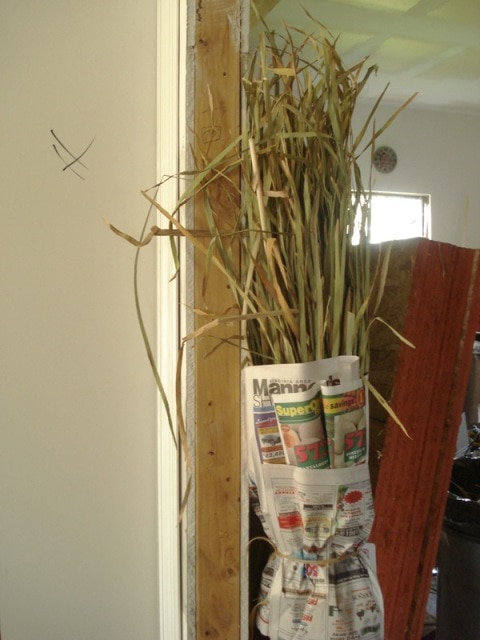
Make sure the leaves are well supported by the wrapping all the way up so they don’t bend or break.
Tie the bundles up well (snug but not too tight as to bend or break the leaves) using baling twine, hemp or strong string.
Store in a dry area in an upright position with the butt ends down, and don’t expose the leaves to sunlight. Be careful how you treat these dry leaves because they are susceptible to breakage and bend easily.
Kept under optimum conditions, processed cattail leaves can be used up to a year or more after harvest.
Preparation of Cattails for Weaving
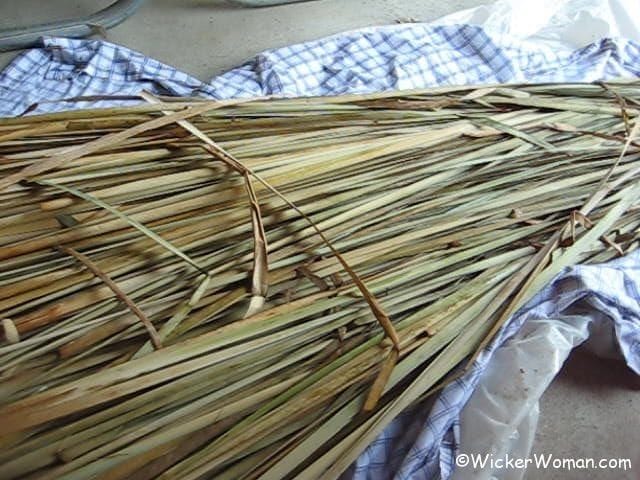
Lay down a large sheet of plastic about the size of a double bed on the floor. Then place a double bedsheet on top of the plastic sheeting. Remove a good-sized “bunch” of dried leaves from the bundle.
Put these leaves on the sheet in a diagonal position if they are really long, and if not, lay them vertically on the long side of the sheet. Have all the cattails laying in the same position, with all the butt ends together and all the tips together.
Sprinkle the leaves with warm water, or saturate using a spray bottle, making sure all are covered well. Don’t soak leaves in a vat of water; they become too waterlogged.
Wrap or roll up the bundle in the sheet, covering tips and butts with the ends of the sheet, and then loosely wrap the leaves and sheet in the plastic sheet.
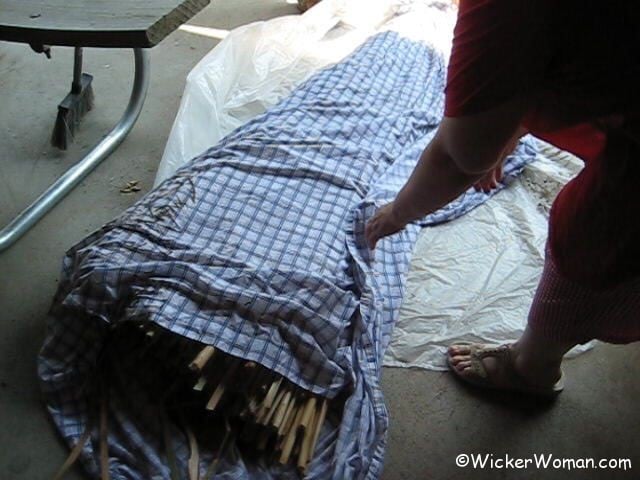
Let the whole works “mellow” or sit for 6 hours or overnight, lying horizontally on the floor, and check back to see that there isn’t mold forming.
When the leaves feel like a soft chamois cloth, then they are ready to use.
If they crack and break when twisted, they have not mellowed enough and if they are slimy and soggy, they have gotten too wet or mellowed for too long.
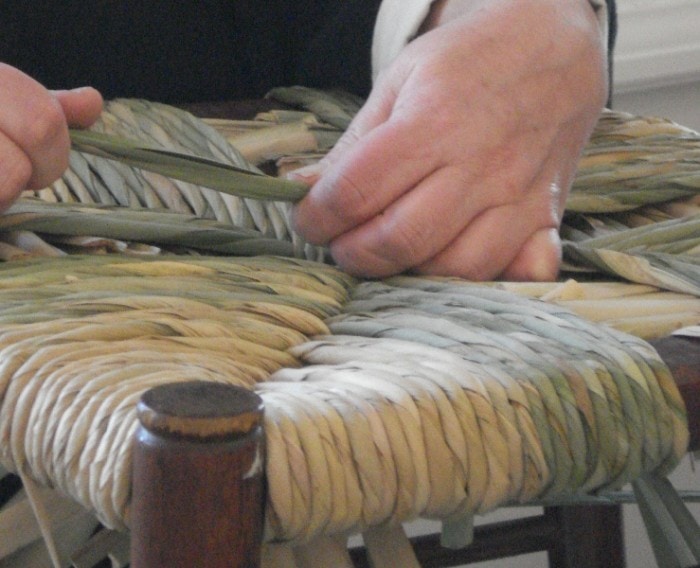
When it’s really hot in the summertime, I never leave my cattails in the wraps for more than 8-12 hours at a time and always wash the sheet and dry the plastic between mellowing.
Take care to only mellow enough leaves to use up in one day’s time, because mold sets in rapidly.

Thank you so much for helping to support this information site by donating generously!

Articles, Tip Sheets, Reports <– Back
Next –> How-to Care for Wicker Baskets

Comments are closed.